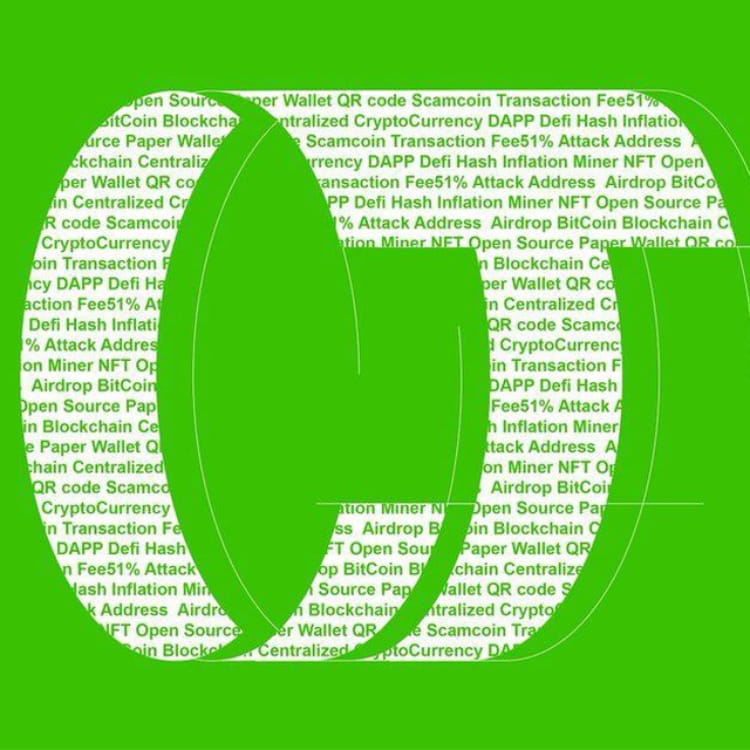
Preço de deBridgeDBR
BRL
Listada
R$0.1043BRL
+0.13%1D
O preço de deBridge (DBR) em Real brasileiro é R$0.1043 BRL.
Gráfico de preços de deBridge (BRL/DBR)
Última atualização em 2025-12-22 22:51:39(UTC+0)
Conversão de DBR para BRL
DBR
BRL
1 DBR = 0.1043 BRL. O preço atual para converter 1 deBridge (DBR) para BRL é de 0.1043. Esta taxa é apenas para referência.
A Bitget oferece as menores taxas de transação do mercado. Quanto mais alto for seu nível VIP, melhores serão as taxas.
Preço atual de deBridge em BRL
O preço em tempo real de deBridge hoje é R$0.1043 BRL, com uma capitalização de mercado atual de R$200.75M. O preço de deBridge aumentou 0.13% nas últimas 24 horas e o volume de trading em 24 horas é de R$59.57M. A taxa de conversão de DBR/BRL (de deBridge para BRL) é atualizada em tempo real.
Quanto custa 1 deBridge em Real brasileiro?
A partir de agora, o preço de deBridge (DBR) em Real brasileiro é R$0.1043 BRL. Você pode comprar 1 DBR por R$0.1043, ou 95.88 DBR por R$10 agora. Nas últimas 24 horas, o maior preço de DBR para BRL foi R$0.1075 BRL, e o menor preço de DBR para BRL foi R$0.1028 BRL.
Você acha que o preço de deBridge vai subir ou cair hoje?
Total de votos:
Subida
0
Queda
0
Os dados de votação são atualizados a cada 24 horas. Eles refletem as previsões da comunidade sobre a tendência de preço de deBridge e não devem ser considerados como uma recomendação de investimento.
Informações de mercado sobre deBridge
Desempenho do preço (24h)
24h
Baixa em 24h de R$0.1Alta em 24h de R$0.11
Máxima histórica (ATH):
R$0.3072
Variação de preço (24h):
+0.13%
Variação de preço (7 dias):
-8.48%
Variação de preço (1 ano):
-55.46%
Classificação de mercado:
#512
Capitalização de mercado:
R$200,747,130.64
Capitalização de mercado totalmente diluída:
R$200,747,130.64
Volume em 24h:
R$59,567,761.44
Oferta circulante:
1.92B DBR
Oferta máxima:
--
Histórico de preços de deBridge (BRL)
O preço de deBridge variou -55.46% no último ano. O preço mais alto de DBR em BRL no último ano foi R$0.2441 e o preço mais baixo de DBR em BRL no último ano foi R$0.07409.
PeríodoVariação de preço (%) Preço mais baixo
Preço mais baixo Preço mais alto
Preço mais alto 
 Preço mais baixo
Preço mais baixo Preço mais alto
Preço mais alto 
24h+0.13%R$0.1028R$0.1075
7d-8.48%R$0.1028R$0.1206
30d-3.55%R$0.1028R$0.1379
90d-25.00%R$0.1025R$0.2236
1y-55.46%R$0.07409R$0.2441
Todo o período-6.53%R$0.07409(2025-06-13, 193 dia(s) atrás)R$0.3072(2024-12-21, 1 anos(s) atrás)
Qual é o preço mais alto do token deBridge?
A máxima histórica do token DBR em BRL foi R$0.3072, registrada em 2024-12-21. Em comparação com a máxima (deBridge), seu preço atual (deBridge) caiu 66.04%.
Qual é o preço mais baixo do token deBridge?
O mínima histórica do token DBR em BRL foi R$0.07409, registrada em 2025-06-13. Em comparação com a mínima (deBridge), seu preço atual (deBridge) subiu 40.77%.
Previsão de preço do token deBridge
Qual é o melhor momento para comprar DBR? Devo comprar ou vender DBR agora?
Antes de comprar ou vender DBR, avalie suas estratégias de trading. As atividades dos traders de longo e curto prazo também podem apresentar diferenças. A análise técnica de Análise técnica de DBR na Bitget na Bitget pode fornecer referências de trading.
De acordo com a análise técnica de DBR em 4 horas, o sinal de trading é Venda forte.
De acordo com Análise técnica de DBR em 1 dia, o sinal de trading é Venda forte.
De acordo com Análise técnica de DBR em 1 semana, o sinal de trading é Venda.
Qual será o preço do token DBR em 2026?
Em 2026, com base em uma previsão de taxa de crescimento anual de +5%, o preço de deBridge(DBR) deve atingir R$0.1146; com base no preço previsto para este ano, o retorno sobre investimento acumulado em deBridge até o final de 2026 atingirá +5%. Para mais detalhes, consulte Previsões de preços de deBridge para 2025, 2026, 2030-2050.Qual será o preço de um DBR em 2030?
Em 2030, com base em uma previsão de taxa de crescimento anual de +5%, o preço de deBridge (DBR) deverá atingir R$0.1394; com base no preço previsto para este ano, o retorno sobre investimento acumulado em deBridge até o final de 2030 atingirá 27.63%. Para mais detalhes, consulte Previsões de preços de deBridge para 2025, 2026, 2030-2050.
Promoções em destaque
Preços globais de deBridge
Qual é o valor de deBridge em outras moedas atualmente? Última atualização: 2025-12-22 22:51:39(UTC+0)
DBR para ARS
Argentine Peso
ARS$27.11DBR para CNYChinese Yuan
¥0.13DBR para RUBRussian Ruble
₽1.47DBR para USDUnited States Dollar
$0.02DBR para EUREuro
€0.02DBR para CADCanadian Dollar
C$0.03DBR para PKRPakistani Rupee
₨5.23DBR para SARSaudi Riyal
ر.س0.07DBR para INRIndian Rupee
₹1.67DBR para JPYJapanese Yen
¥2.93DBR para GBPBritish Pound Sterling
£0.01DBR para BRLBrazilian Real
R$0.1Como comprar deBridge(DBR)

Crie sua conta na Bitget gratuitamente
Crie sua conta na Bitget com seu e-mail ou número de celular e escolha uma senha forte para proteger sua conta.

Verifique sua conta
Verifique sua identidade inserindo suas informações pessoais e enviando um documento de identidade válido com foto.

Converter DBR em BRL
Escolha quais criptomoedas operar na Bitget.
Perguntas frequentes
Qual é o preço atual de deBridge?
O preço em tempo real de deBridge é R$0.1 por (DBR/BRL), com uma capitalização de mercado atual de R$200,747,130.64 BRL. O valor de deBridge sofre oscilações frequentes devido às atividades 24h do mercado de criptomoedas. O preço atual e os dados históricos de deBridge estão disponíveis na Bitget.
Qual é o volume de trading em 24 horas de deBridge?
Nas últimas 24 horas, o volume de trading de deBridge foi R$59.57M.
Qual é o recorde histórico de deBridge?
A máxima histórica de deBridge é R$0.3072. Essa máxima histórica é o preço mais alto para deBridge desde que foi lançado.
Posso comprar deBridge na Bitget?
Sim, atualmente, deBridge está disponível na Bitget. Para informações detalhadas, confira nosso guia Como comprar .
É possível obter lucros constantes ao investir em deBridge?
Claro, a Bitget fornece uma plataforma de trading estratégico com robôs de trading para automatizar suas operações e aumentar seus lucros.
Onde posso comprar deBridge com a menor taxa?
Temos o prazer de anunciar que a plataforma de trading estratégico já está disponível na corretora da Bitget. A Bitget é líder de mercado no que diz respeito a taxas de trading e profundidade, o que garante investimentos lucrativos para os traders.
Preços de criptomoedas relacionadas
Preço de Fartcoin BRLPreço de Pi BRLPreço de Toncoin BRLPreço de Bonk BRLPreço de Cardano BRLPreço de Pepe BRLPreço de Dogecoin BRLPreço de Shiba Inu BRLPreço de Terra BRLPreço de Smooth Love Potion BRLPreço de Kaspa BRLPreço de dogwifhat BRLPreço de Worldcoin BRLPreço de Ethereum BRLPreço de OFFICIAL TRUMP BRLPreço de XRP BRLPreço de Stellar BRLPreço de Solana BRLPreço de WINkLink BRLPreço de Litecoin BRL
Onde posso comprar deBridge (DBR)?
Seção de vídeos: verificação e operações rápidas

Como concluir a verificação de identidade na Bitget e se proteger contra golpes
1. Faça login na sua conta Bitget.
2. Se você for novo na Bitget, assista ao nosso tutorial sobre como criar uma conta.
3. Passe o mouse sobre o ícone do seu perfil, clique em "Não verificado" e clique em "Verificar".
4. Escolha seu país ou região emissora, o tipo de documento de identidade e siga as instruções.
5. Selecione como prefere concluir sua verificação: pelo app ou computador.
6. Insira seus dados, envie uma cópia do seu documento de identidade e tire uma selfie.
7. Envie sua solicitação e pronto. Verificação de identidade concluída!
Compre deBridge por 1 BRL
Pacote de boas-vindas de 6.200 USDT para novos usuários Bitget!
Comprar deBridge agora
Os investimentos em criptomoedas, incluindo a compra de deBridge na Bitget, estão sujeitos a risco de mercado. A Bitget fornece maneiras fáceis e convenientes para você comprar deBridge. Fazemos o possível para informar totalmente nossos usuários sobre cada criptomoeda que oferecemos na corretora. No entanto, não somos responsáveis pelos resultados que possam advir da sua compra deBridge. Esta página e qualquer informação incluída não são um endosso de investimento ou a nenhuma criptomoeda em particular.
Conversão de DBR para BRL
DBR
BRL
1 DBR = 0.1043 BRL. O preço atual para converter 1 deBridge (DBR) para BRL é de 0.1043. Esta taxa é apenas para referência.
A Bitget oferece as menores taxas de transação do mercado. Quanto mais alto for seu nível VIP, melhores serão as taxas.
Recursos de DBR
Avaliações de deBridge
4.4
Contratos:
DBRiDg...1DXnUu5(Solana)
Bitget Insights

Mason_Lee
2025/12/11 16:51
$DBR
Price is stabilizing after a sharp pullback from the 0.02523 peak, showing controlled consolidation above short-term support. Momentum remains intact as long as the 0.0218 zone holds, with upside potential if volume re-accelerates.
Entry Zone: 0.02210 – 0.02270
TP1: 0.02340
TP2: 0.02430
TP3: 0.02520
Stop-Loss: 0.02160
Trend remains bullish while structure holds above support. Watching for a clean reclaim of MA10 to confirm continuation.
DBR-1.16%

ScalpingX
2025/12/11 10:05
$DBR - Mcap 45.63M$ - 88%/ 24.5K votes Bullish
SC02 M15 - pending Long order. Entry lies within the LVN and is not affected by any weak zone, the projected stop-loss is around 4.53%. The uptrend is in the 92nd cycle, with an increase amplitude of 21.17%.
#TradingSetup #CryptoInsights
DBR-1.16%

_FortuneCrypto
2025/12/06 06:48
🔮 Trending Crypto Events by Finarc 🌟
🗓️ Event: 5.54MM Token Unlock
📅 Date: December 06, 2025
💰 Coin: RedStone (Pre-Market) ( $RED )
🗓️ Event: Solana Economic Zone
📅 Date: December 07, 2025
💰 Coin: General Event ( $CRYPTO ), deBridge ( $DBR ), ( $IO ),( $JUP ), ( $SOL )
RED+0.09%
JUP-0.67%

Cointime(1)
2025/11/20 04:06
deBridge基金会:deBridge积分第二季申领活动已上线
跨链互操作协议deBridge基金会发推表示,deBridge积分第二季申领活动已上线。所有符合条件的参与者现可申领DBR。3亿枚(占总供应量的3%)将作为第二季空投的一部分进行分发。申领窗口将于12月19日关闭。
DBR-1.16%
BGUSER-YG764FV7
2025/10/29 15:15
$DBR sell this scaam coin guys
DBR-1.16%
Operar
Earn
DBR está disponível para operação na Bitget e pode ser mantido sob custódia na Bitget Wallet. A Bitget também é uma das primeiras corretoras centralizadas (CEX) a disponibilizar operações com DBR.
Você pode operar DBR na Bitget.DBR/USDT
SpotPreços de moedas recém-listadas na Bitget








